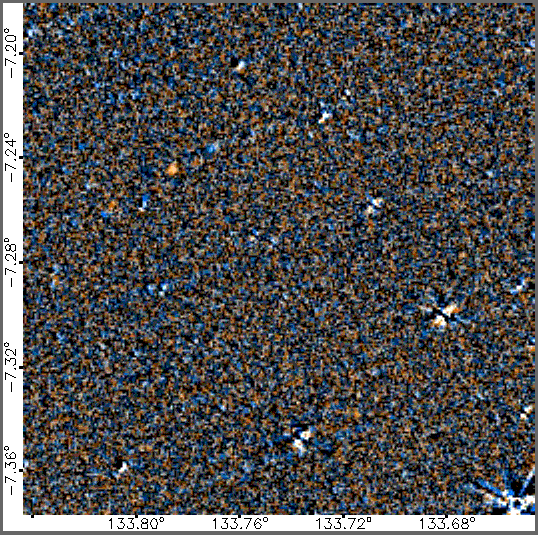

| Online: | |
| Visits: | |
| Stories: |

| Story Views | |
| Now: | |
| Last Hour: | |
| Last 24 Hours: | |
| Total: | |
Join the Search for Planet Nine: Backyard Worlds Website Lets Public Search The Heavens
Caltech researchers have found evidence suggesting there may be a “Planet X” deep in the solar system. This hypothetical Neptune-sized planet orbits our sun in a highly elongated orbit far beyond Pluto. The object, which the researchers have nicknamed “Planet Nine,” could have a mass about 10 times that of Earth and orbit about 20 times farther from the sun on average than Neptune. It may take between 10,000 and 20,000 Earth years to make one full orbit around the sun.
The new website uses the data to search for unknown objects in and beyond our own solar system. In 2016, astronomers at Caltech in Pasadena, California, showed that several distant solar system objects possessed orbital features indicating they were affected by the gravity of an as-yet-undetected planet, which the researchers nicknamed “Planet Nine.” If Planet Nine — also known as Planet X — exists and is as bright as some predictions, it could show up in WISE data.
Planet X has not yet been discovered, and there is debate in the scientific community about whether it exists. The prediction in the Jan. 20 issue of the Astronomical Journal is based on mathematical modeling.
The search also may discover more distant objects like brown dwarfs, sometimes called failed stars, in nearby interstellar space.
“Brown dwarfs form like stars but evolve like planets, and the coldest ones are much like Jupiter,” said team member Jackie Faherty, an astronomer at the American Museum of Natural History in New York. “By using Backyard Worlds: Planet 9, the public can help us discover more of these strange rogue worlds.”
A previously cataloged brown dwarf named WISE 0855−0714 shows up as a moving orange dot (upper left) in this loop of WISE images spanning five years. By viewing movies like this, anyone can help discover more of these objects. Credits: NASA/WISE
Credits: NASA/WISE
Backyard Worlds: Planet 9 relies on human eyes because we easily recognize the important moving objects while ignoring the artifacts. It’s a 21st-century version of the technique astronomer Clyde Tombaugh used to find Pluto in 1930, a discovery made 87 years ago this week.
On the website, people around the world can work their way through millions of “flipbooks,” which are brief animations showing how small patches of the sky changed over several years. Moving objects flagged by participants will be prioritized by the science team for follow-up observations by professional astronomers. Participants will share credit for their discoveries in any scientific publications that result from the project.
“Backyard Worlds: Planet 9 has the potential to unlock once-in-a-century discoveries, and it’s exciting to think they could be spotted first by a citizen scientist,” said team member Aaron Meisner, a postdoctoral researcher at the University of California, Berkeley, who specializes in analyzing WISE images.
Backyard Worlds: Planet 9 is a collaboration between NASA, UC Berkeley, the American Museum of Natural History in New York, Arizona State University, the Space Telescope Science Institute in Baltimore, and Zooniverse, a collaboration of scientists, software developers and educators who collectively develop and manage citizen science projects on the internet.
NASA’s Jet Propulsion Laboratory in Pasadena, California, manages and operates WISE for NASA’s Science Mission Directorate. The WISE mission was selected competitively under NASA’s Explorers Program managed by the agency’s Goddard Space Flight Center. The science instrument was built by the Space Dynamics Laboratory in Logan, Utah. The spacecraft was built by Ball Aerospace & Technologies Corp. in Boulder, Colorado. Science operations and data processing take place at the Infrared Processing and Analysis Center at Caltech, which manages JPL for NASA.
For more information about Backyard Worlds: Planet 9, visit: http://backyardworlds.org
For more information about NASA’s WISE mission, visit:http://www.nasa.gov/wise
Contacts and sources:
By Francis Reddy
NASA’s Goddard Space Flight Center
Source:



